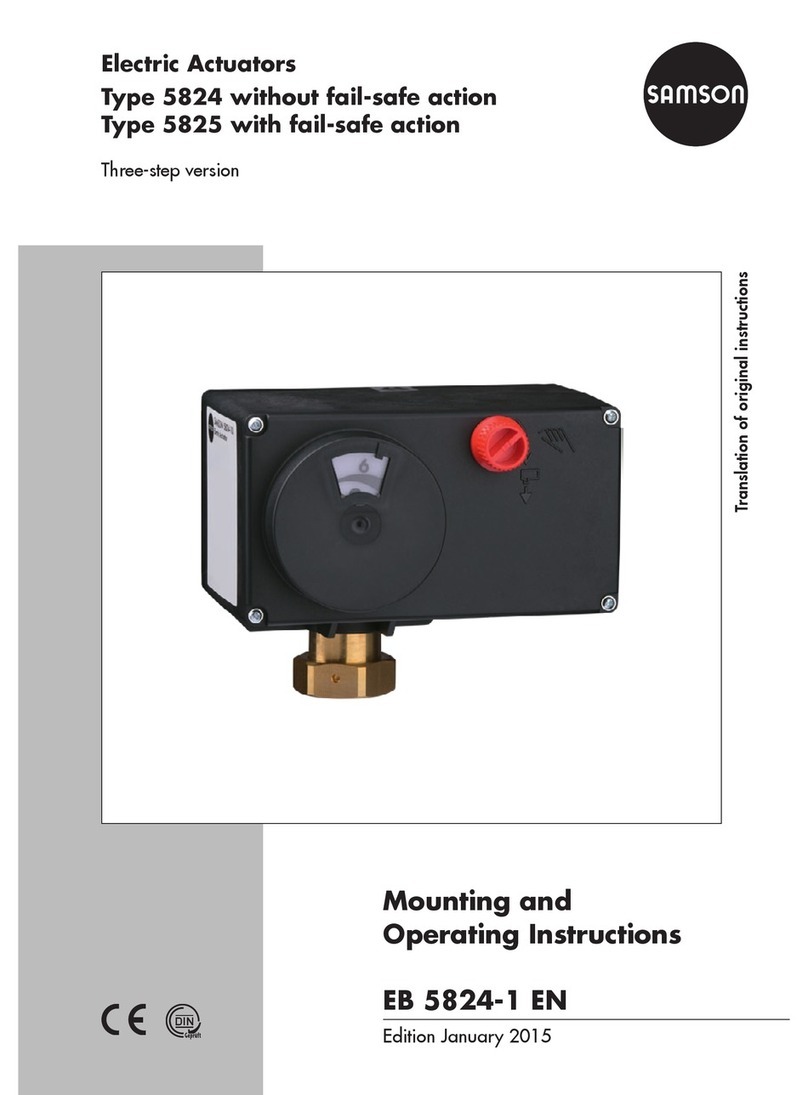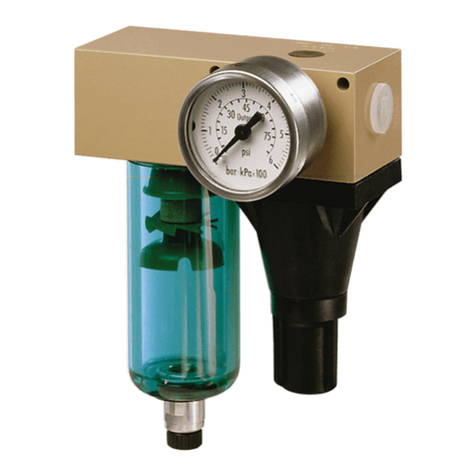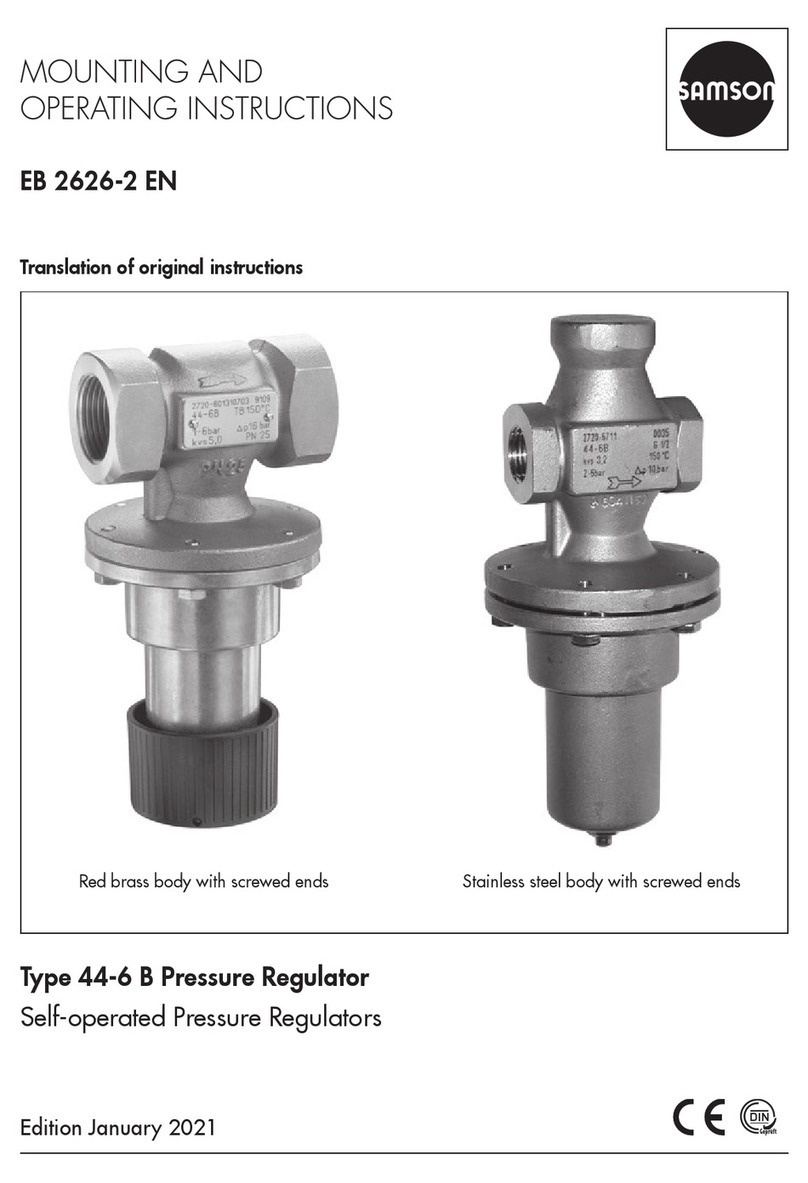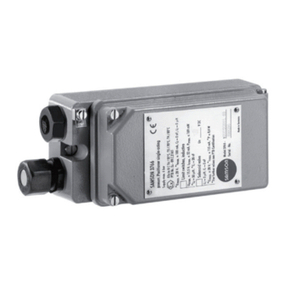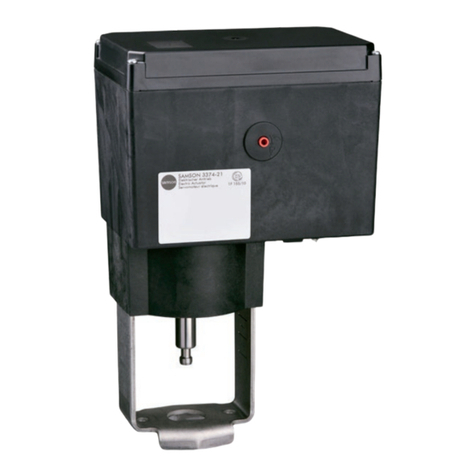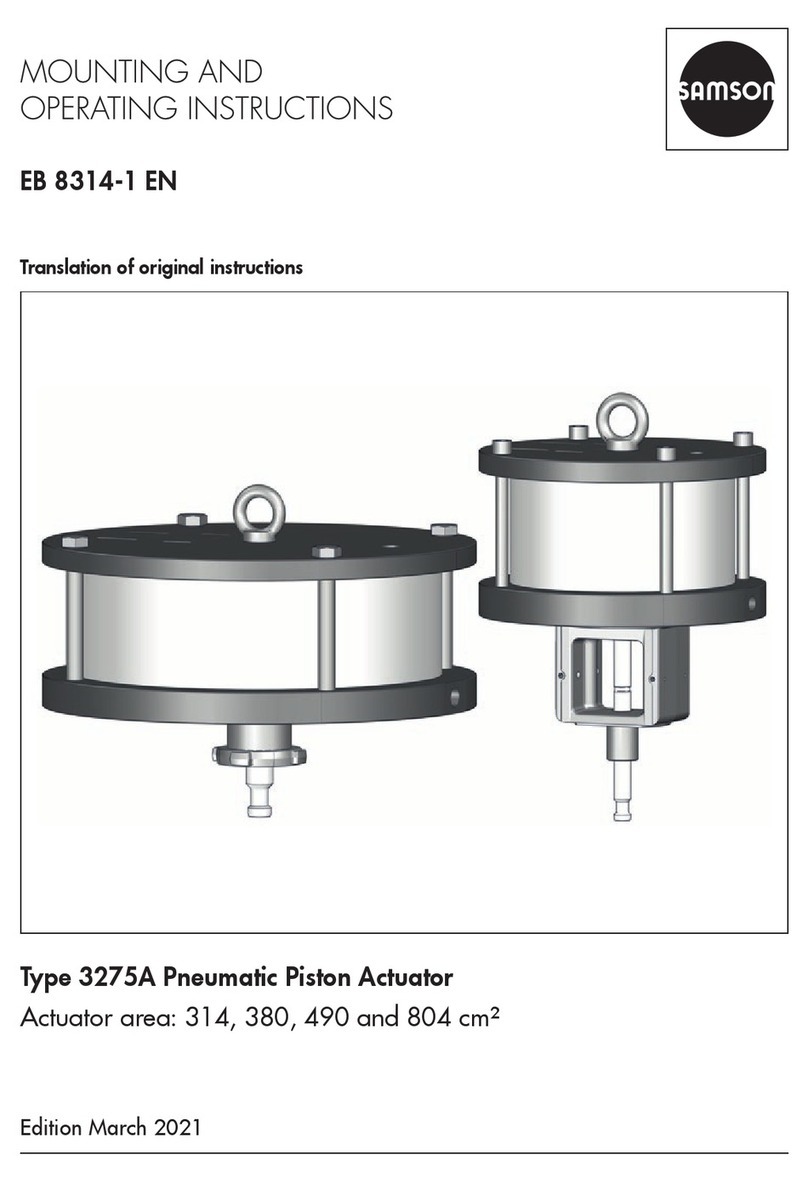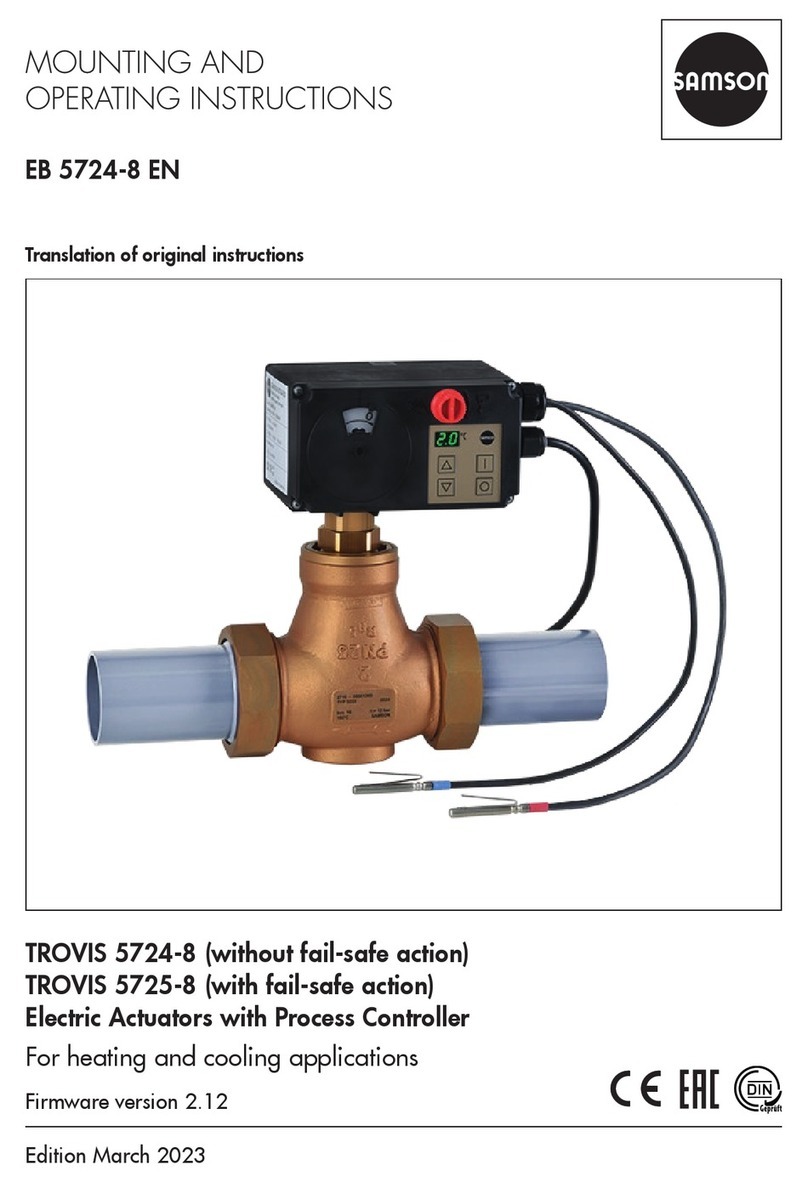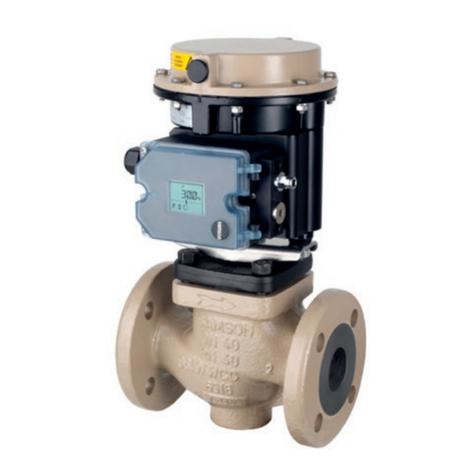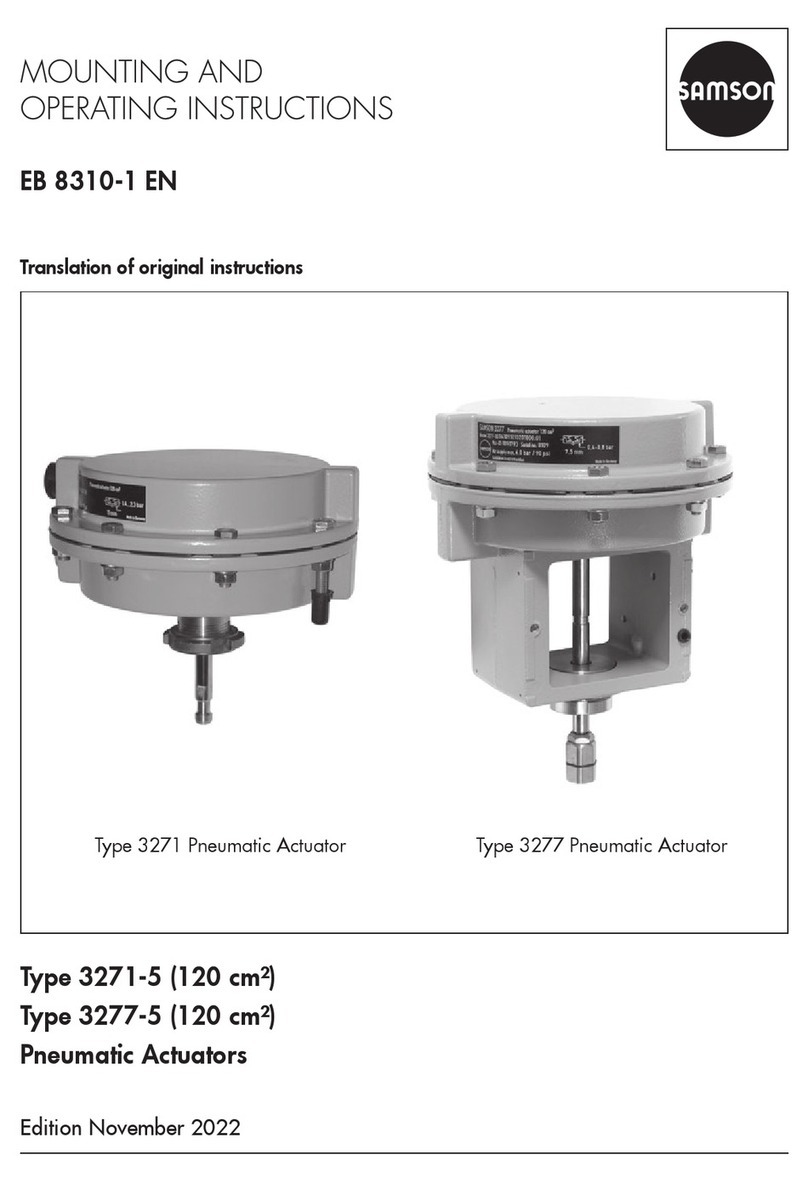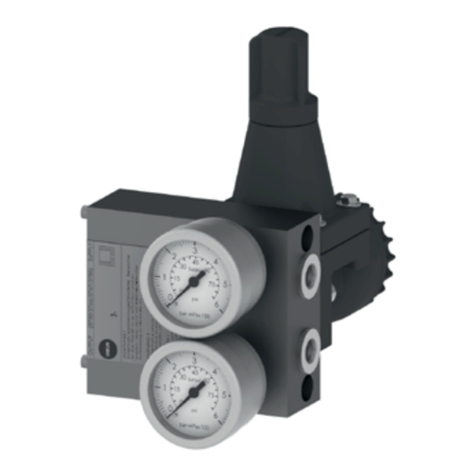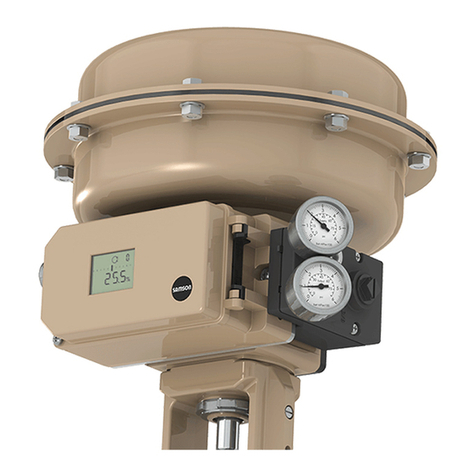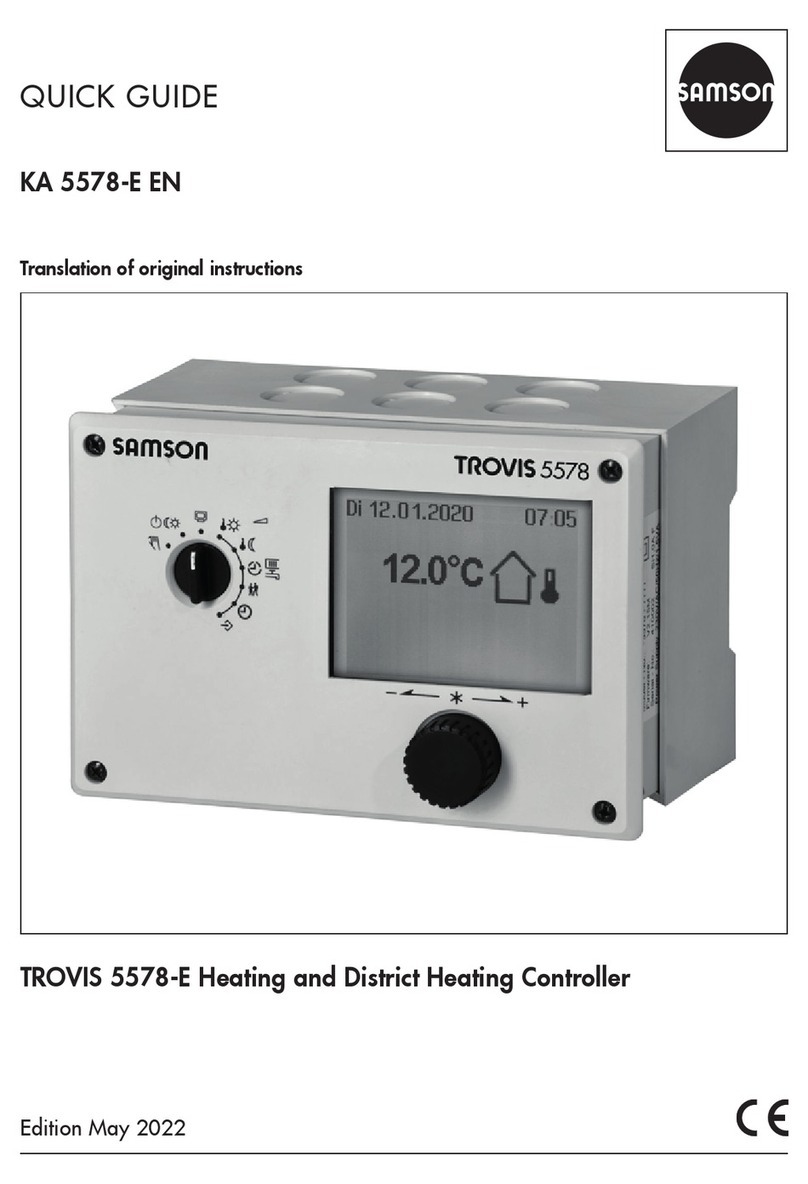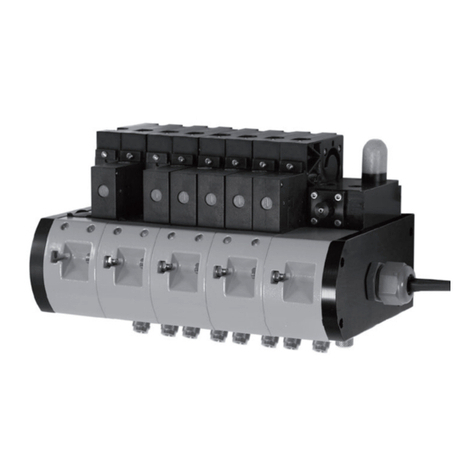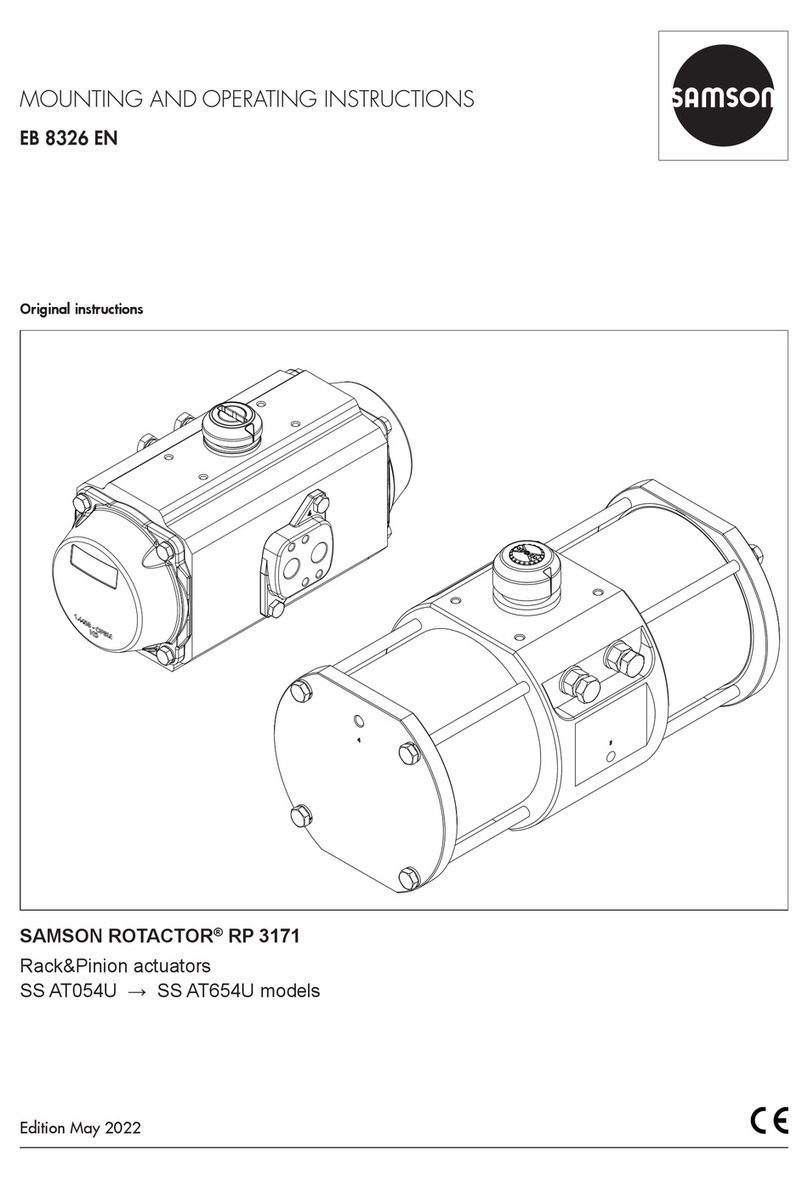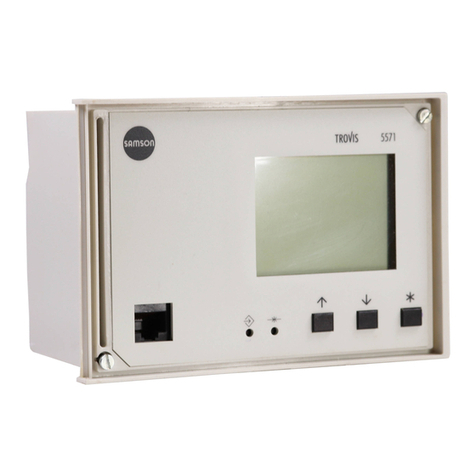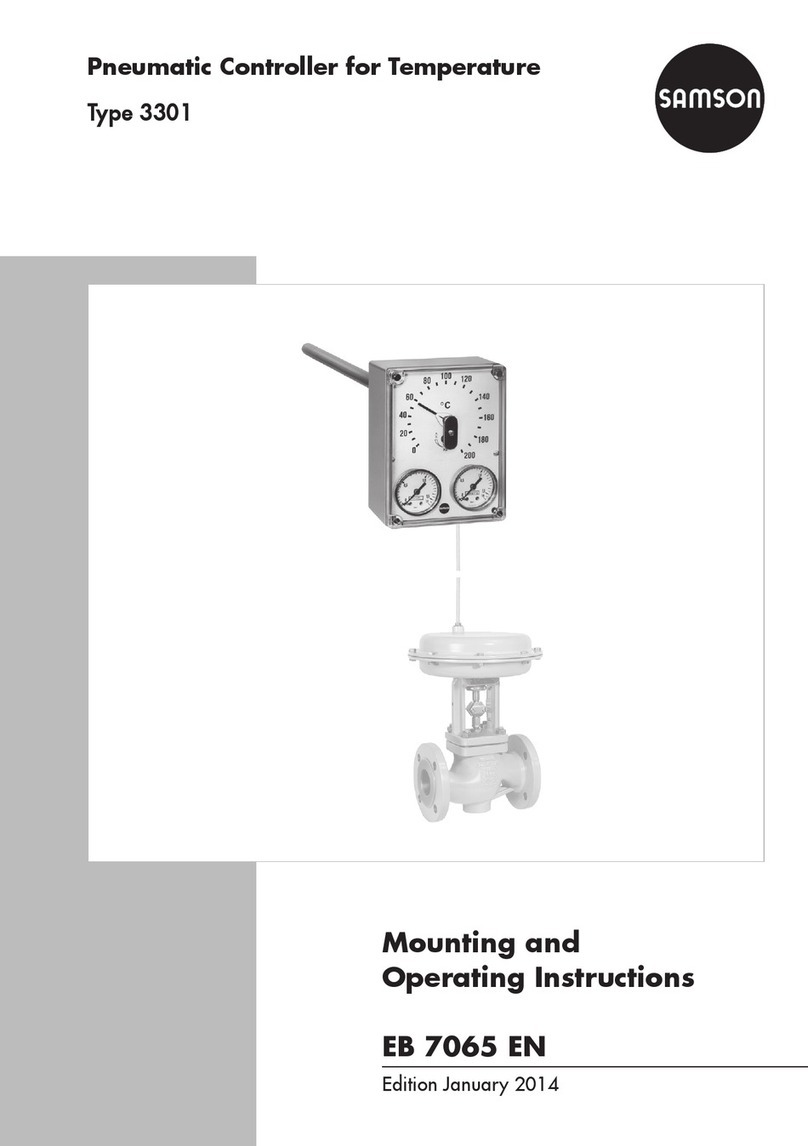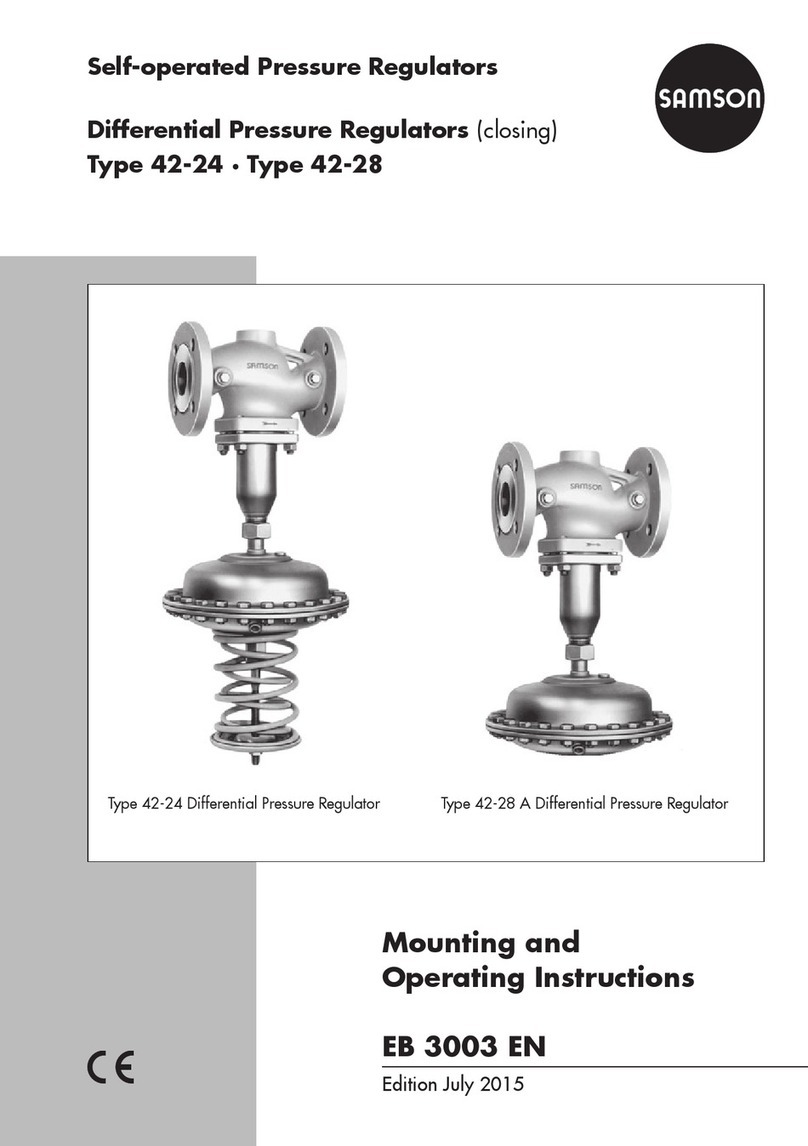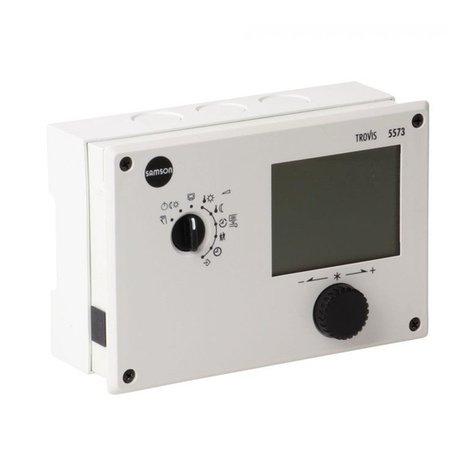
Contents
EB 3007 EN
1 Safety instructions and measures ................................................................1-1
1.1 Notes on possible severe personal injury ......................................................1-4
1.2 Notes on possible personal injury ................................................................1-5
1.3 Notes on possible property damage.............................................................1-7
2 Markings on the device ..............................................................................2-1
2.1 Nameplates................................................................................................2-1
2.2 Location of the nameplates ..........................................................................2-2
2.3 Materialidenticationnumber .....................................................................2-2
2.3.1 Type 2422 Valve.........................................................................................2-2
2.3.2 Type2420andType2425Actuators............................................................2-2
3 Design and principle of operation ...............................................................3-1
3.1 Additionalttings........................................................................................3-4
3.2 Technical data ............................................................................................3-5
4 Shipment and on-site transport ...................................................................4-1
4.1 Accepting the delivered goods .....................................................................4-1
4.2 Removing the packaging from the regulator..................................................4-1
4.3 Transporting and lifting the regulator............................................................4-2
4.3.1 Transporting the regulator............................................................................4-2
4.3.2 Lifting the regulator.....................................................................................4-3
4.4 Storing the regulator ...................................................................................4-4
5 Installation.................................................................................................5-1
5.1 Installation conditions..................................................................................5-1
5.2 Preparation for installation...........................................................................5-4
5.3 Installation..................................................................................................5-5
5.3.1 Installing the regulator.................................................................................5-6
5.4 Testing the regulator....................................................................................5-7
5.4.1 Leak test.....................................................................................................5-8
5.4.2 Pressure test................................................................................................5-8
5.4.3 Filling the plant...........................................................................................5-9
5.4.4 Cleaning the pipeline ................................................................................5-10
5.5 Insulation .................................................................................................5-10
6 Start-up .....................................................................................................6-1
6.1 Start-up and putting the regulator back into operation ...................................6-1
6.2 Starting up the plant....................................................................................6-2
7 Operation..................................................................................................7-1
7.1 Adjusting the differential pressure set point ...................................................7-1
